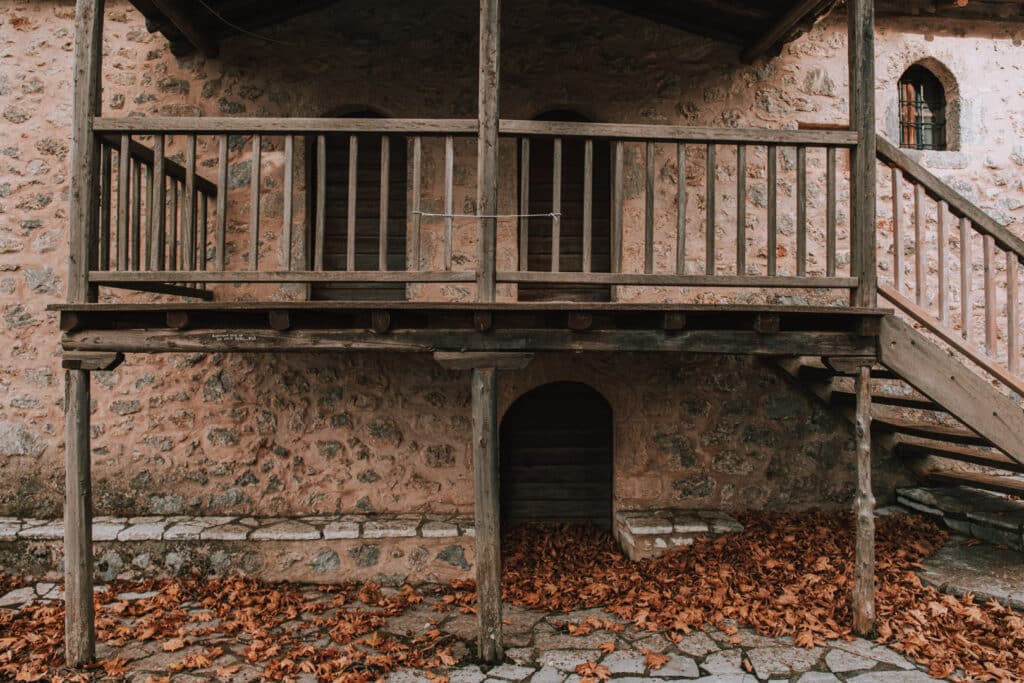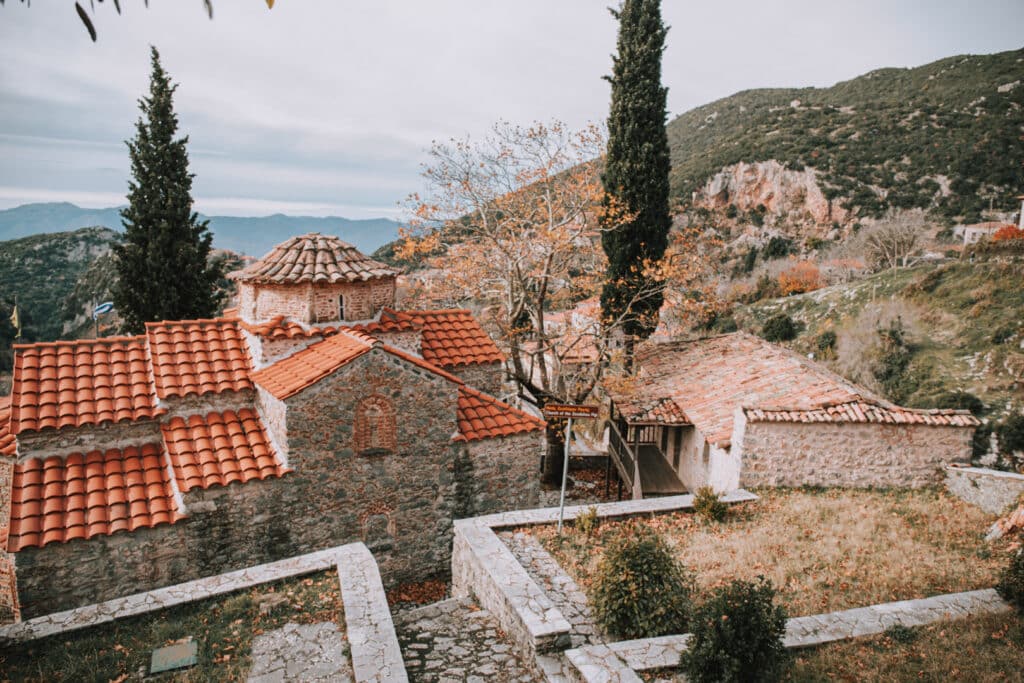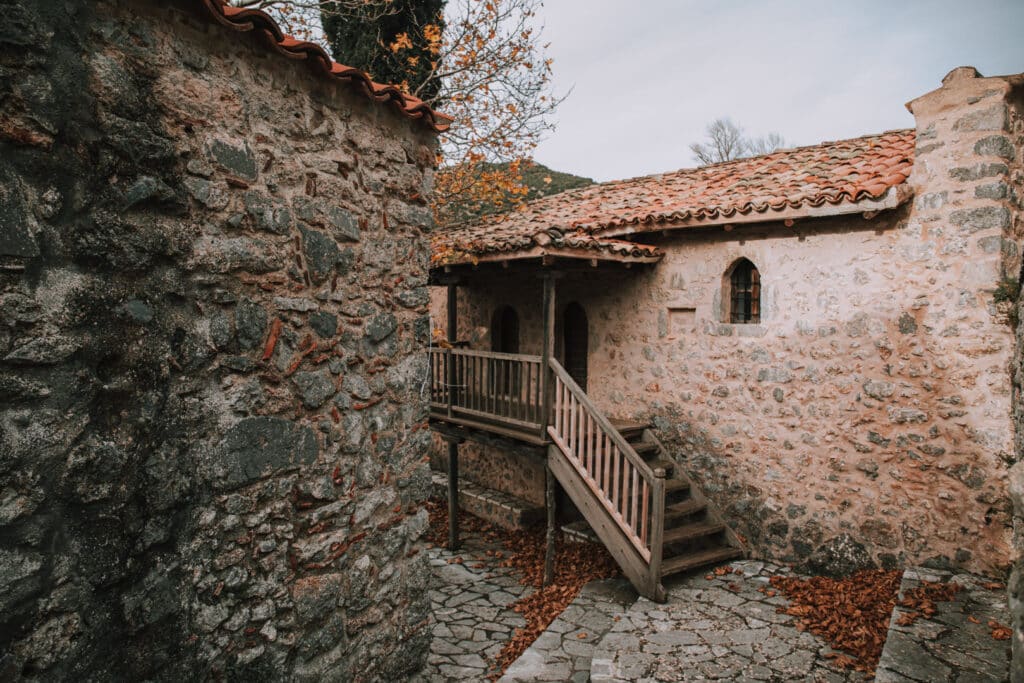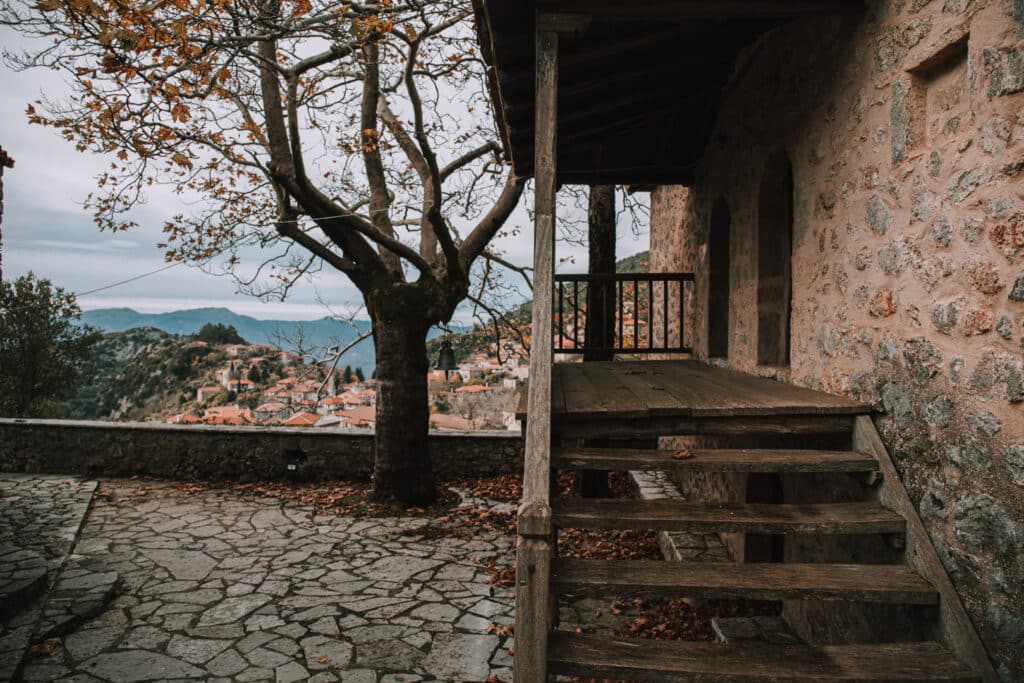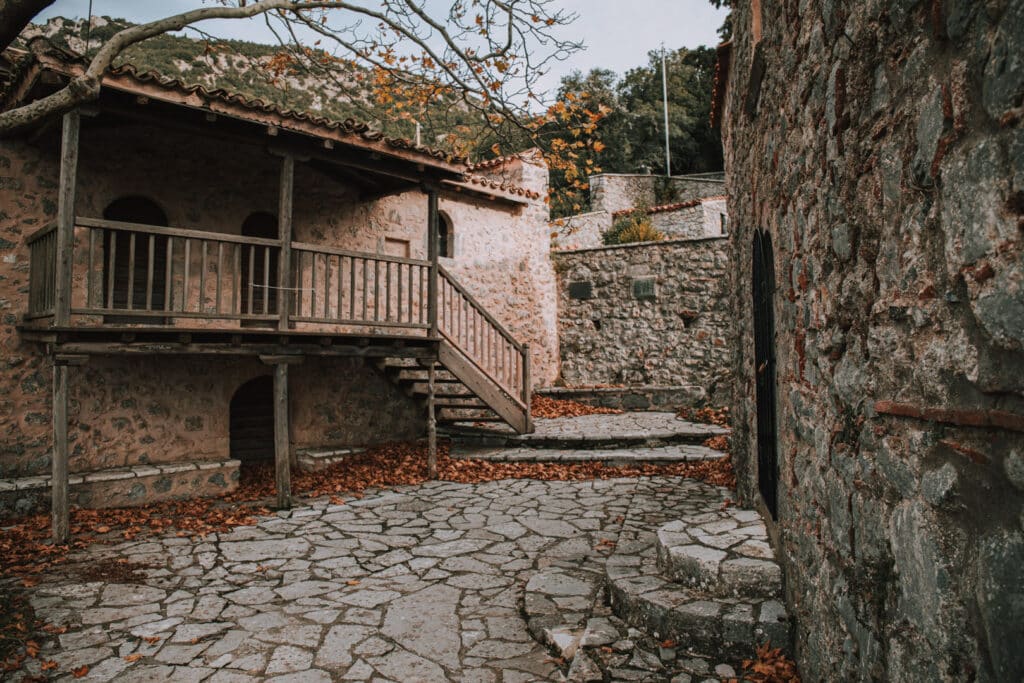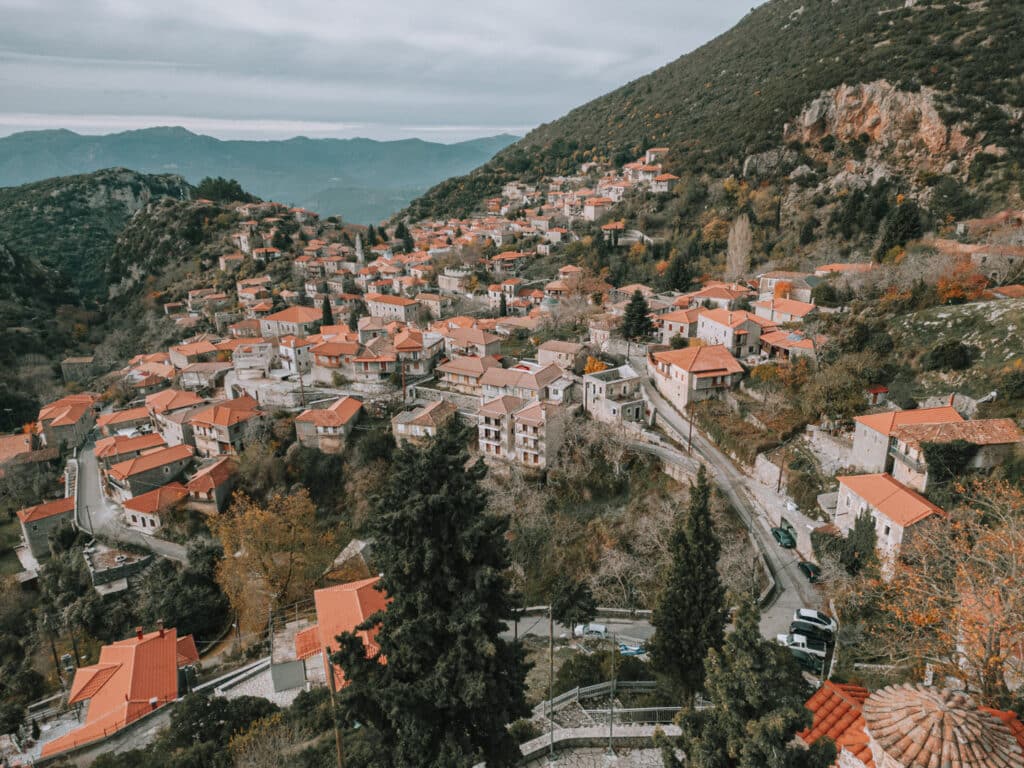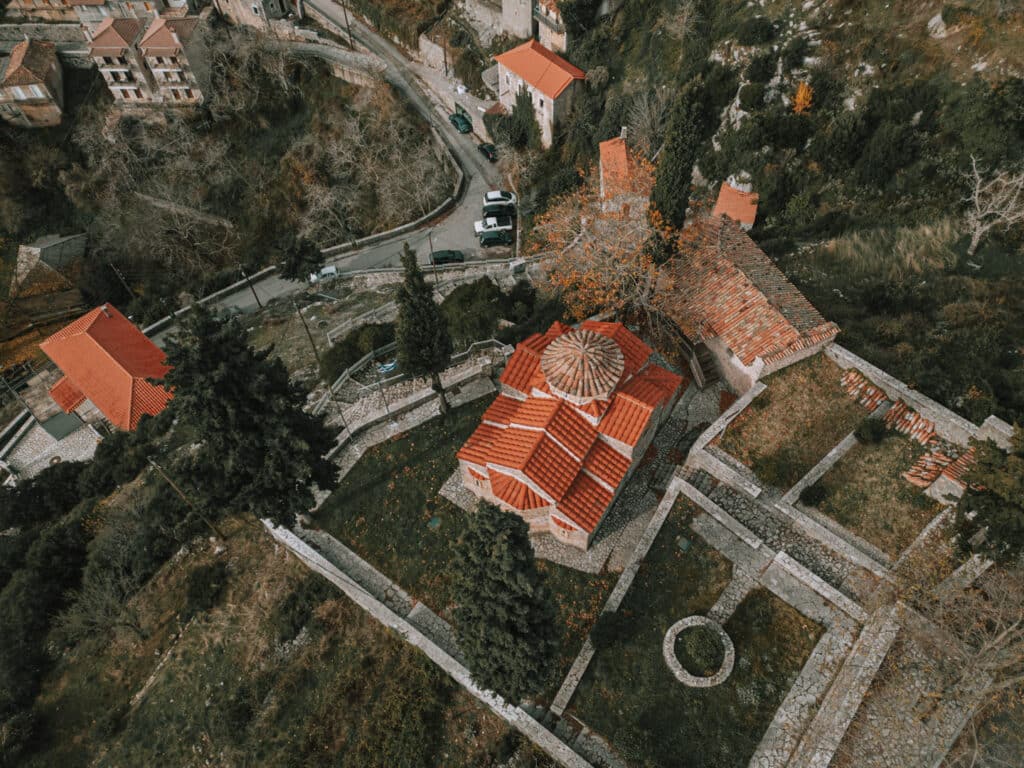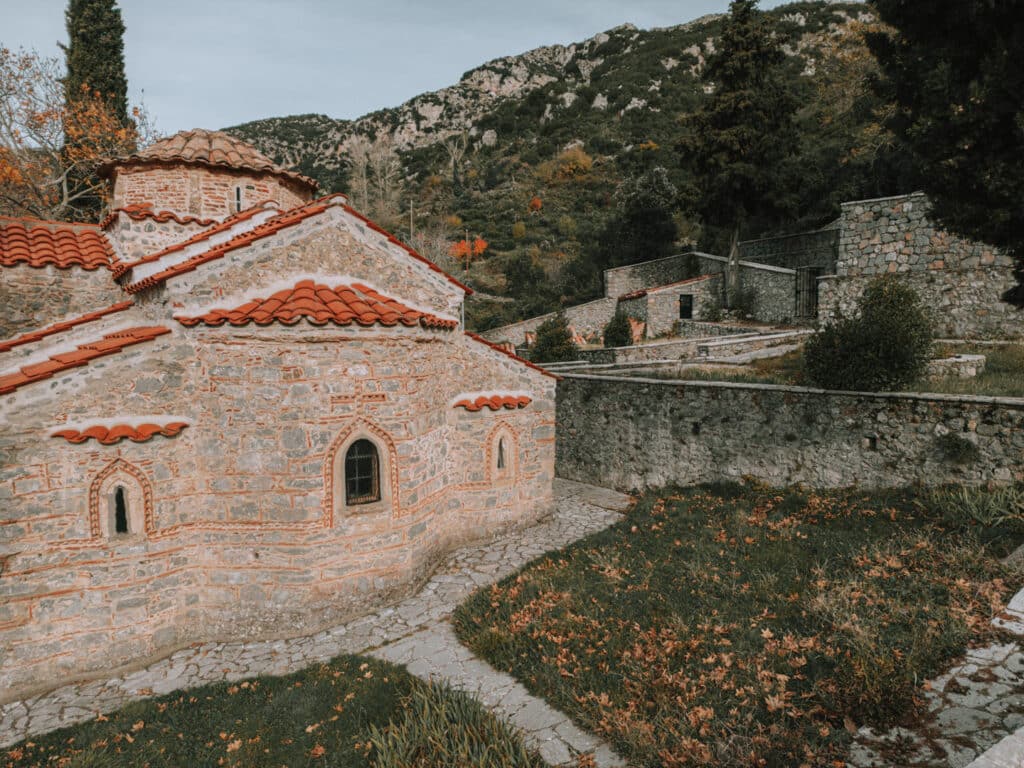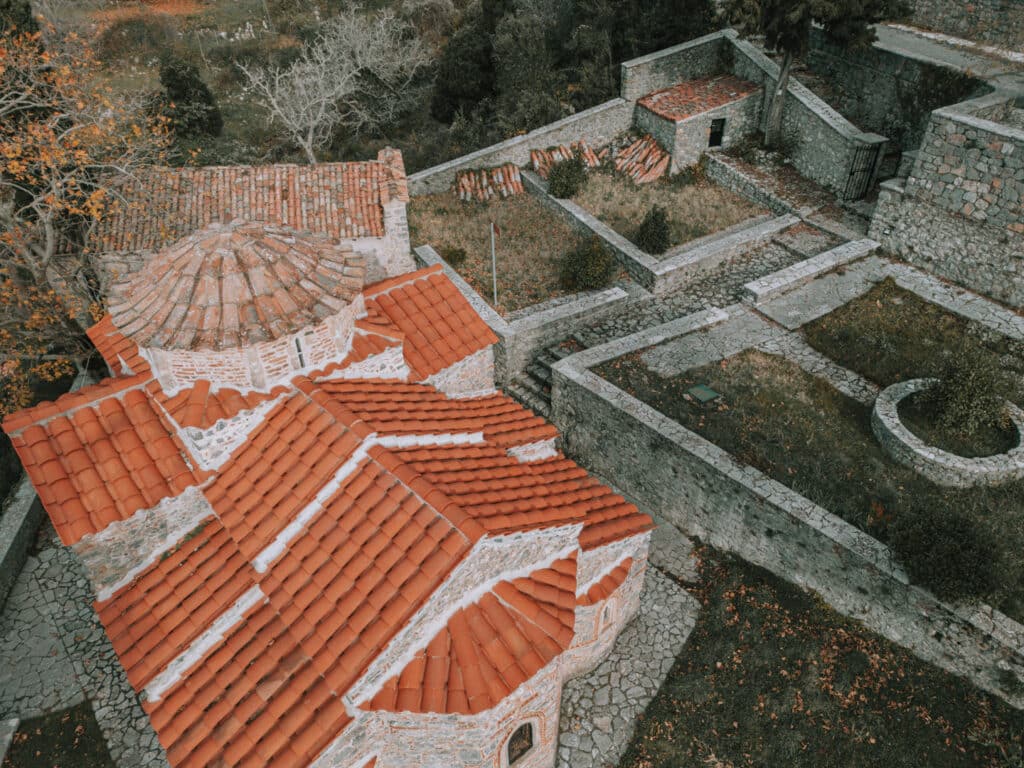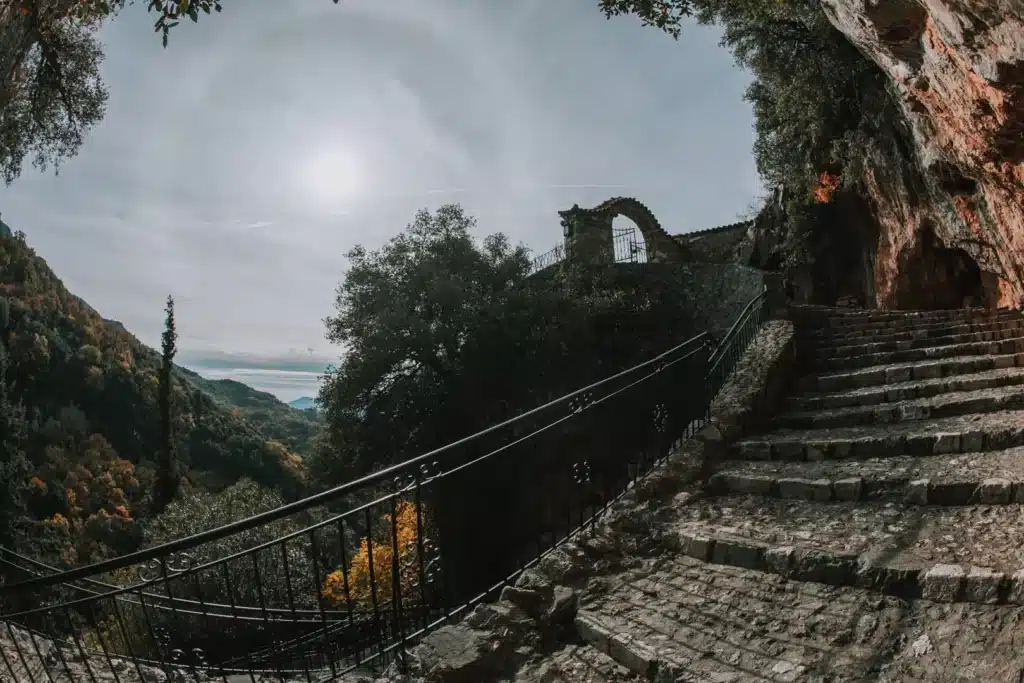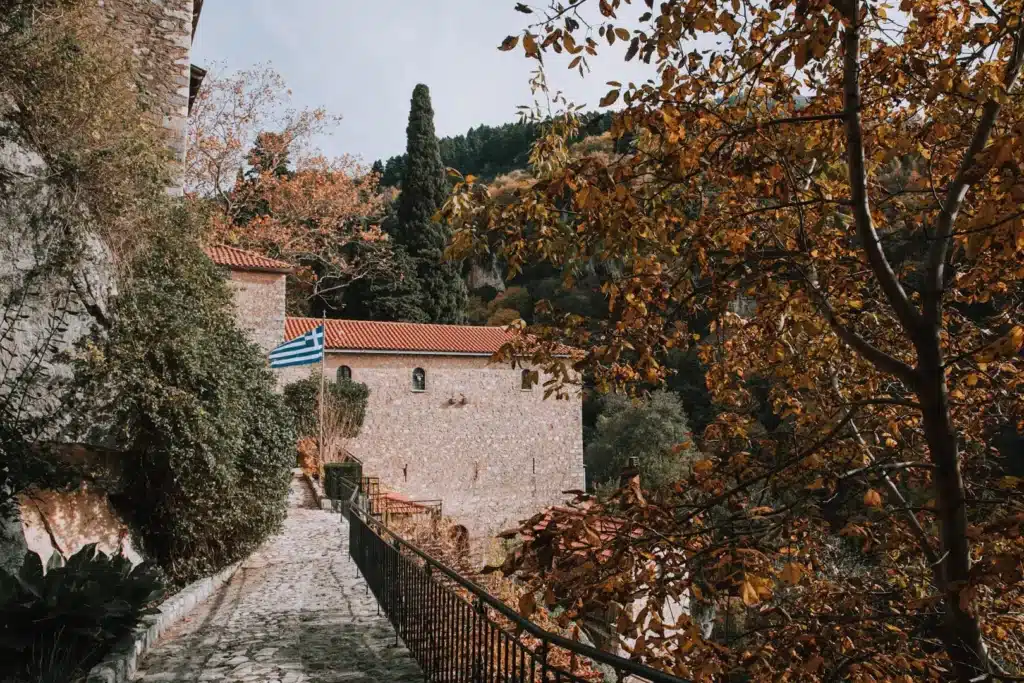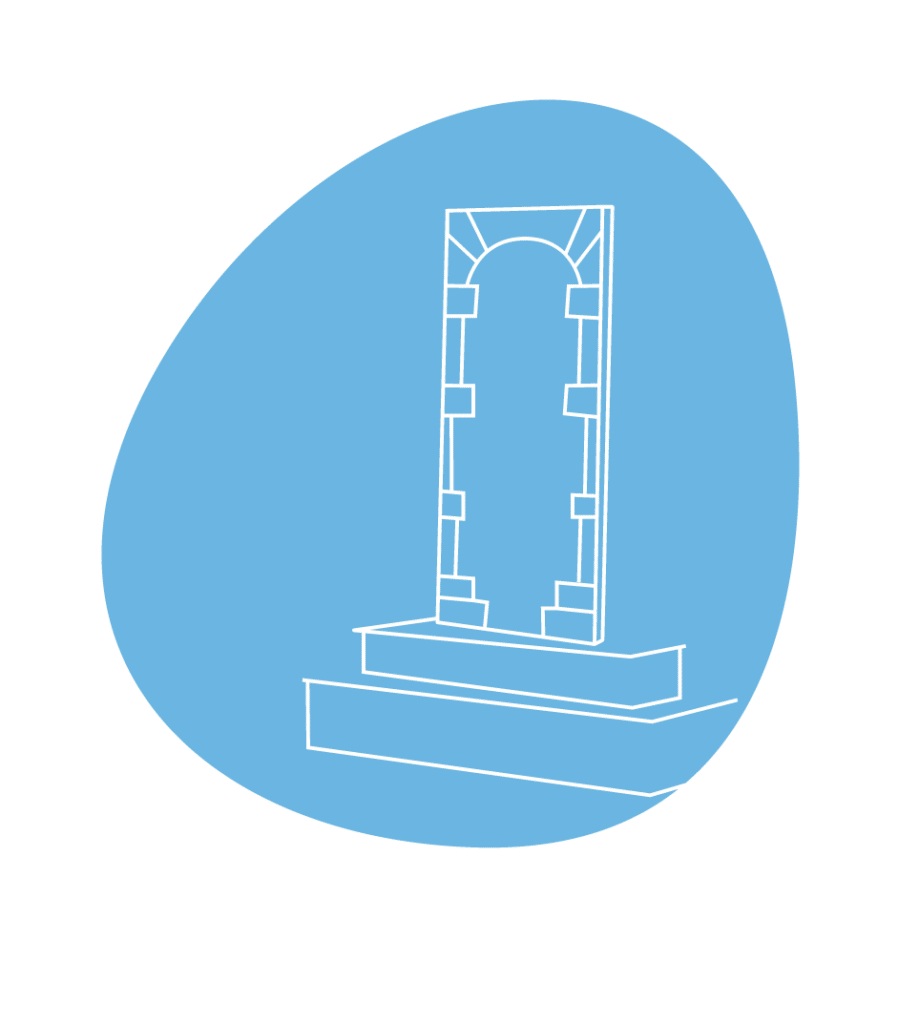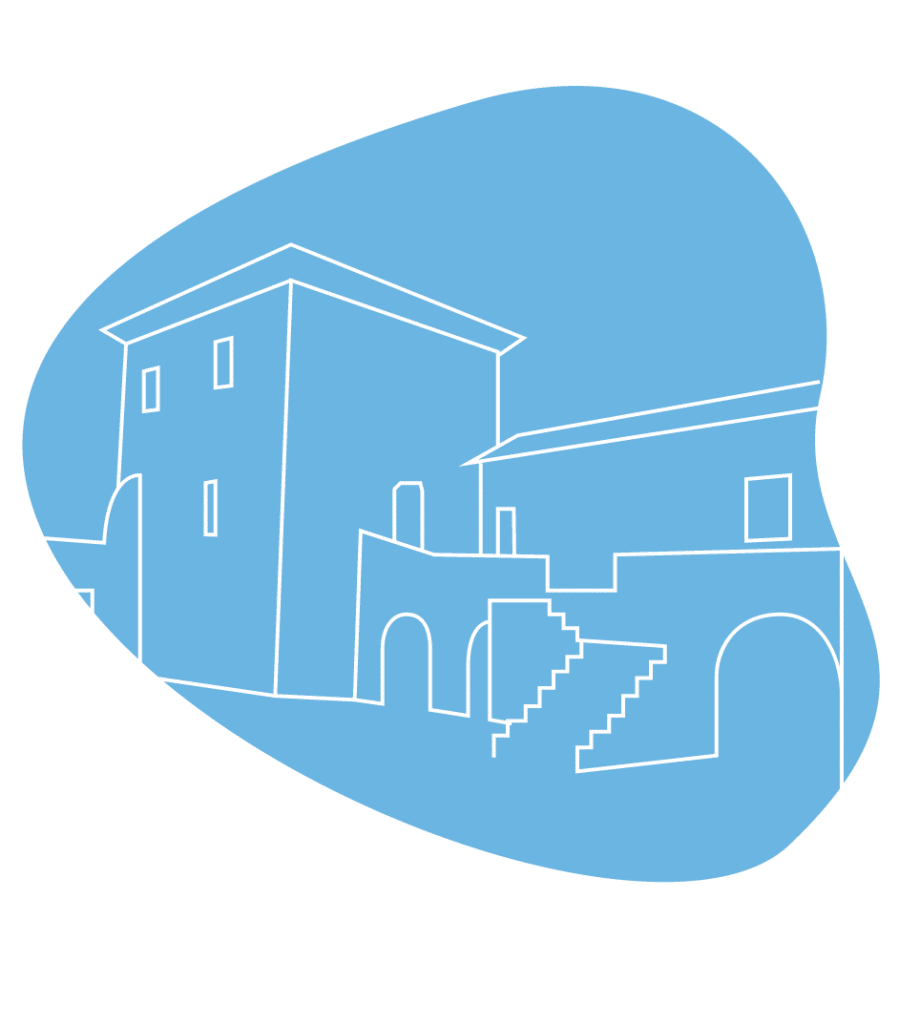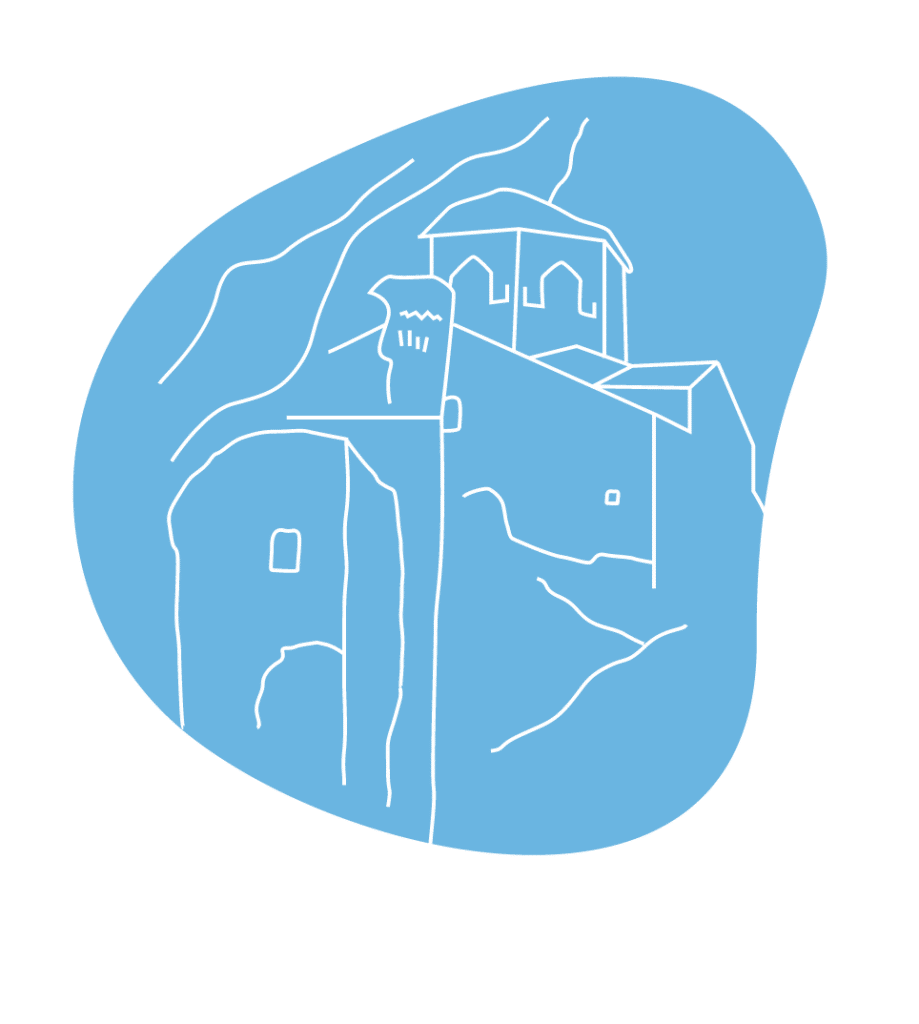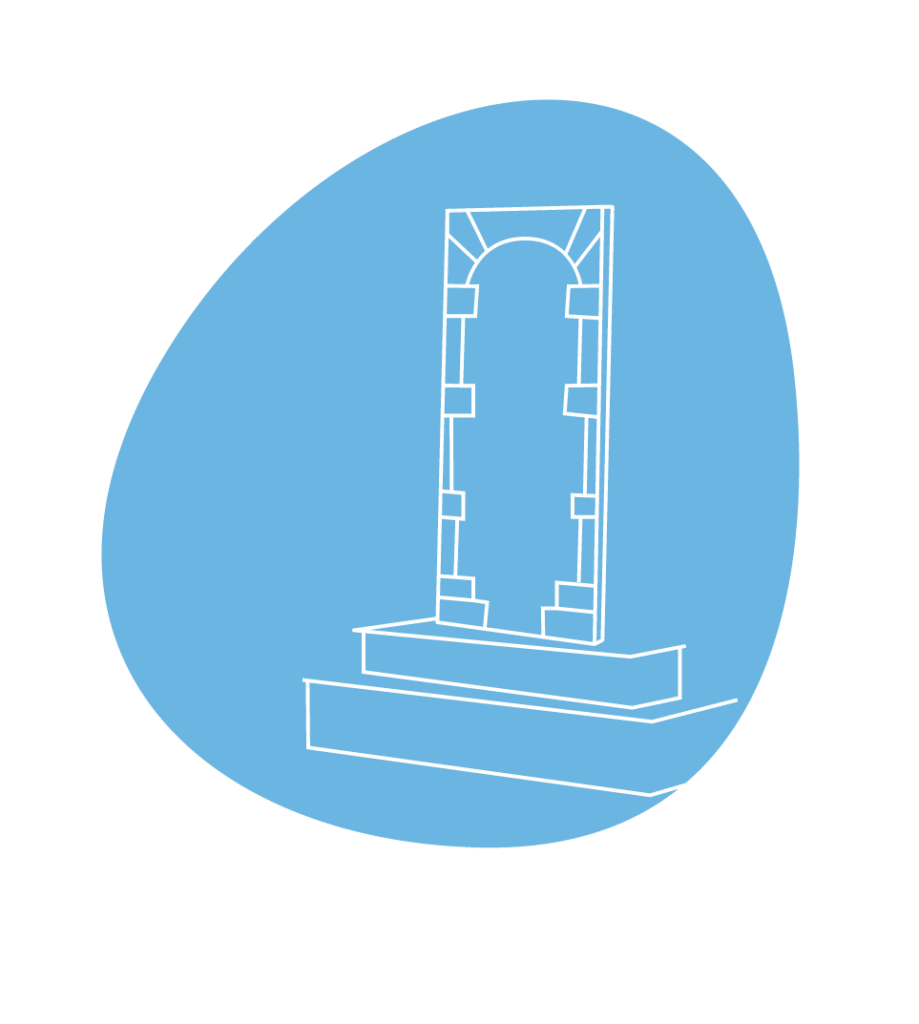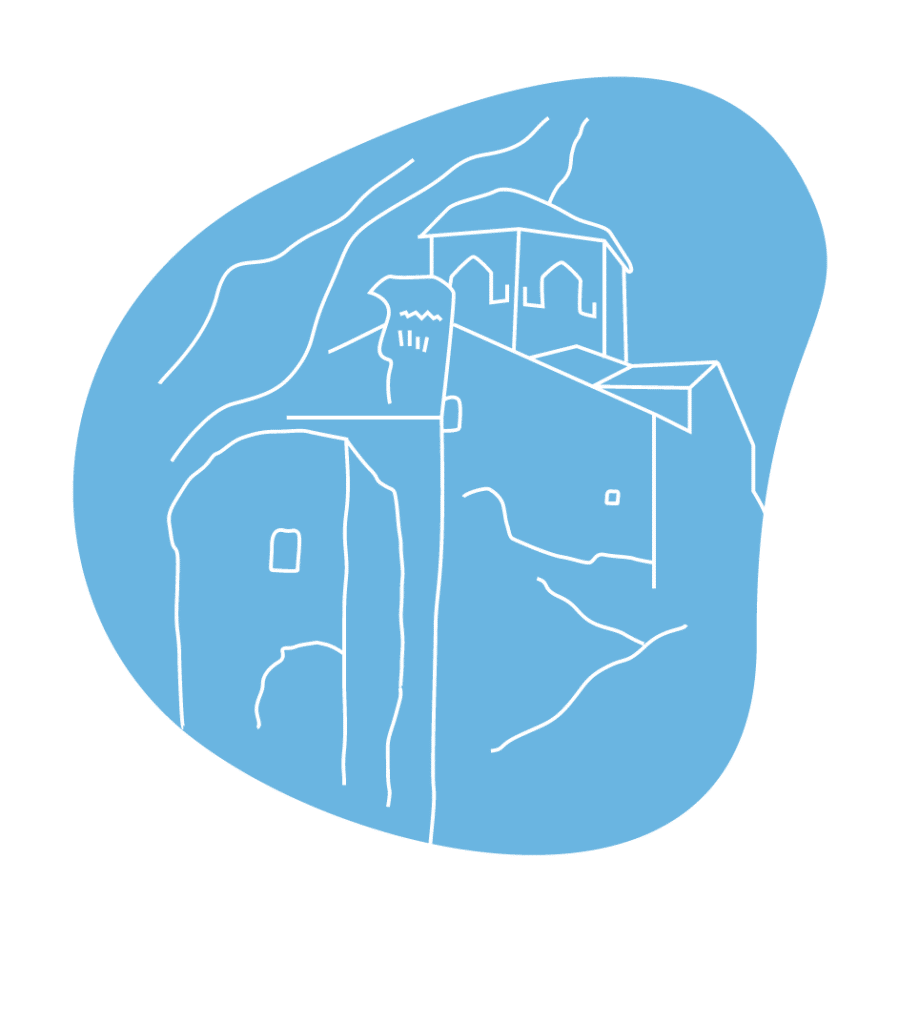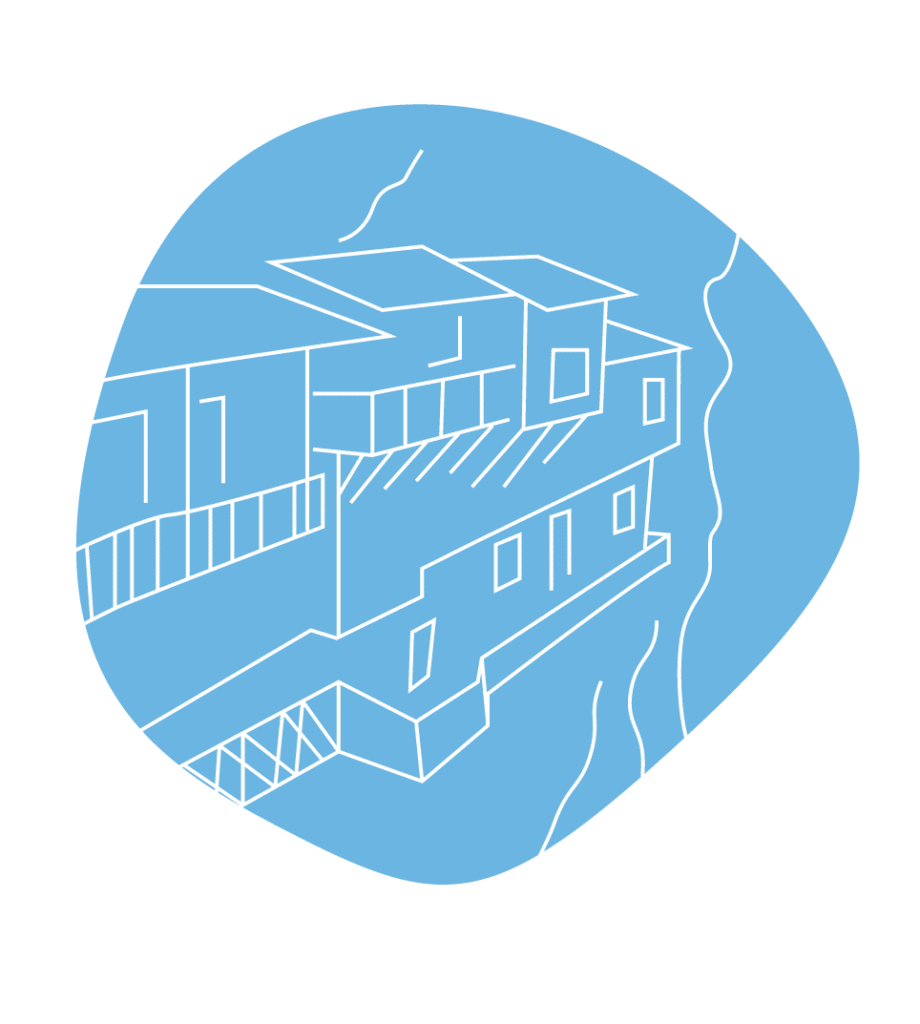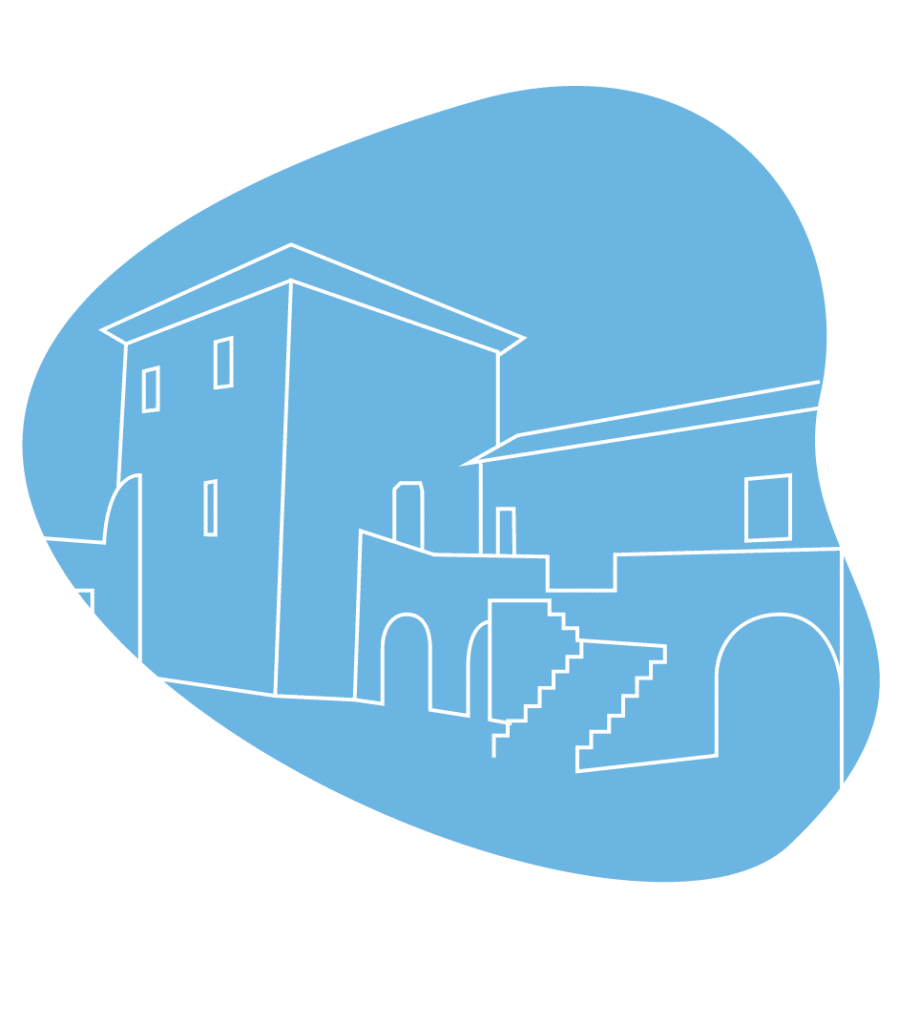Built only ten years after the fall of Constantinople, the Holy Monastery of Zoodochos Pigi or Chrysopigi kept alive the flame of liberation during the difficult years when Greece was under Ottoman occupation.
With beautiful and historical images inside, but also with a magnificent view of Stemnitsa from the outside, the seat of the Peloponnesian Senate during the early stages of the Greek War of Independence cannot but move the visitor and invoke memories of the glorious past.
Cradle of religious devotion and of precious historical value for the Greeks, the Monastery of Zoodochos Pigi, built on a rocky hill, is also an enchanting “balcony” overlooking the beautiful settlement of Stemnitsa, as well as the surrounding area.
The Holy Monastery of Zoodochos Pigi or Chrysopigi, as it is popularly known, is located near the northern part of Stemnitsa. According to tradition, its foundation dates back to the year 1443 AD, exactly ten years before the fall of Constantinople.
The founders of the Monastery, which is proclaimed as a prominent Byzantine monument, were the High Priest Achilleios and the Hieromonk Bessarion. Its katholikon (the church of the monastery, which is the only building preserved to this day together with the two-story cell) was built around the 15th century in the form of crossed-dome plan, while its interior is decorated with frescoes dating back to the 17th century. In addition, the wood-carved iconostasis is a work of 1805 AD.
The portico of the iconostasis is decorated with images dating back to the 19th century. Five of them depict scenes from the Dodekaorton, i.e., the Birth of Christ, the Candlemas, the Transfiguration of the Savior, Pentecost, and the Ascension of Jesus, while besides the Dodekaorton, the Palpation of Thomas is depicted, which is part of the iconographic cycle of the Matins Gospels (2).
From May 26, 1821, until March 30, 1823, the two-story cell that is preserved next to the sanctuary of the Monastery, was the seat of the Peloponnesian Senate, the first central administrative body of Revolutionary Greece, being responsible for the organization and administration of the Peloponnese.
In a more general context, the Peloponnesian Senate, until its dissolution with the convening of the Second National Assembly in Astros, played a very important role in the onset of organized administration in Greece, while its action contributed to the survival of the Revolution and the achievement of independence.
The Monastery, as it is built on a rocky hill, offers a wonderful view towards the village of Stemnitsa, evoking memories of the region’s glorious past.
Διαδρομες
Ιερά Μονή Ζωοδόχου Πηγής Στεμνίτσας
Το γραφικό και ιστορικό χωριό της Δημητσάνας αποτελεί βασικό θεματοφύλακα ιστορικών και λαογραφικών παραδόσεων του ελληνικού γένους. Στη βιβλιοθήκη της, εκτός από τα εμπλουτισμένα με 35.000 τόμους βιβλίων ράφια.
Αρχοντικό των Δεληγιανναίων
Το οίκημα δεσπόζει στον Πάνω Μαχαλά του ιστορικού χωριού Λαγκάδια, το οποίο, εκτός από σημαντικούς χτίστες, χάρισε στην Ελλάδα την περίφημη οικογένεια των Δεληγιανναίων, προεστών του Μοριά πριν από την Επανάσταση. Από την οικογένεια Δεληγιάννη προήλθαν και δύο Πρωθυπουργοί στα χρόνια μετά την απελευθέρωση.
Dimitsana Historic Public Library
The picturesque and historical village of Dimitsana is a key depository of historical and folklore traditions of the Greek nation. In its library, apart from the shelves enriched with 35,000 volumes of books, the visitor can also admire important relics and memorabilia from various moments of the glorious past.















